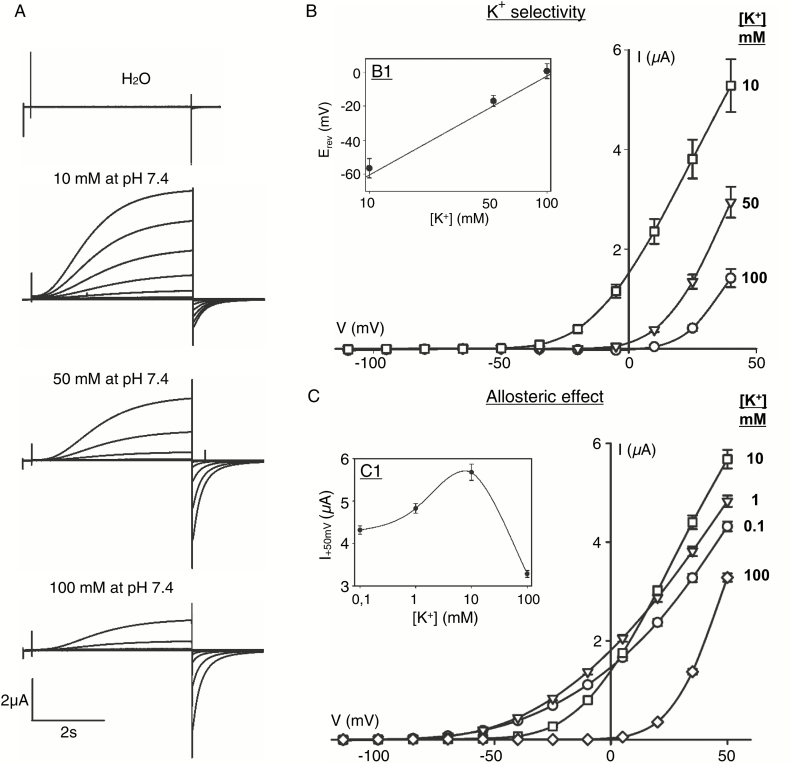Fig 2.
Functional characterization of the grapevine channel VvK5.1 by heterologous expression in Xenopus laevis oocytes. (A) Representative current traces in response to voltage–clamp pulses from –110 mV to +40 mV that depend on varying external K+ concentrations at pH 7.4 as indicated. Time-dependent outwardly rectifying currents are activated upon depolarization. (B) Current–voltage curves for mean currents mediated by VvK5.1 that depend on K+ concentrations; n=10 ±SE. Note the shift in the activation potential at the reduced external K+. (B1) VvK5.1 reversal potentials (Erev) were determined from tail current analysis, indicating a shift in dependence on external K+ concentrations as shown; n=10 ±SE. The line in the insert corresponds to the predicted Nernst potentials of K+. Tail currents were analysed at voltage pulses ranging from –110 mV to +40 mV, following activation of the channel at +30 mV. (C) Current–voltage curves for mean currents mediated by VvK5.1 that depend on K+ concentrations; n=8 ±SE. (C1) The maximal currents at +50 mV decreased between 10 mM and 0.1 mM K+, despite the increase in driving force.

